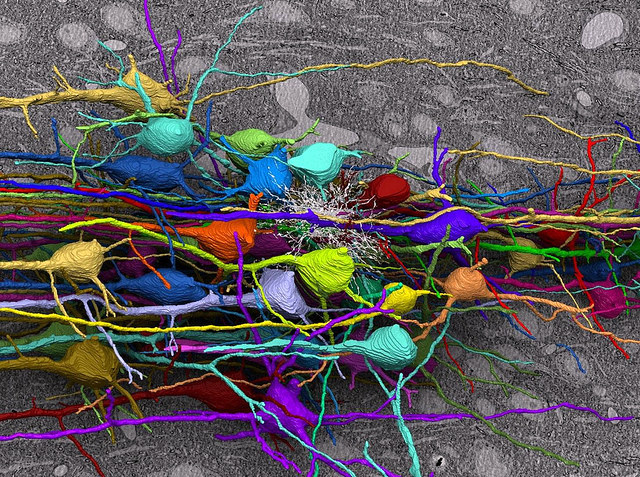Recognizing and distinguishing objects through vision, essential for survival
Recognizing and distinguishing objects through vision, essential for survival
The CHAMPMouse project aims to obtain a map of brain activity during this cognitive task. A three-year FLAG-ERA project with the participation of Ernest Montbrió, first investigator and member of the Center for Brain and Cognition.
One essential function for the survival of animals is, through stimulating the sense of sight, recognizing and differentiating each of the objects that appear in the field of vision.
CHAMPMouse (CHArting Multi-areal Visual Perception in the Mouse) is a FLAG-ERA project linked to the Human Brain Project, lasting three years. It began on 1 December 2015 and aims to map the areas of the brain involved in the visual perception of mice in order to study the brain processes underlying the cognitive process of differentiating objects in a given environment.
The team of researchers of the project belongs to an international consortium made up of three centres coordinated by J. Alexander Heime, a researcher at the Institute of Neuroscience of Holland (Netherlands), and Ernest Montbrió as first investigator and member of the Center for Brain and Cognition directed by Gustavo Deco, ICREA researcher at the Department of Information and Communication Technologies (DTIC).
Mapping brain functional connectivity during perception
The protocol of the CHAMPMouse project is structured around an initial stage that hopes to obtain the neural mapping and image segmentation of the areas of the brain involved in vision of the brain of the mouse while doing a perceptual task, both at mesoscopic (interconnection networks) and at microscopic (nerve cells) levels.
The second stage will consist of identifying cell specificity, that is to say, what cells are essential for carrying out the task of recognizing objects in a certain visual field.
Finally, the study will combine the open access anatomical atlases available to the scientific community, with the results of the mapping of the CHAMPMouse project, both during perception at mesoscopic and microscopic level, and in resting state, in the absence of any specific activity.
The ultimate goal of the project is to build a detailed model of the functional connectivity of the areas of the brain involved in the visual perception and resolution of the mouse.
Image credits:
3D reconstruction of neurons from ZEISS Atlas dataset, mouse brain, ultrathin sections on wafer, ATUM preparation, image width 50 * 50 μm, ZEISS FE-SEM. www.zeiss.com/sem Courtesy of Daniel Berger, Group of S. Seung, Dep. Brain and Cognitive Sciences, MIT. G. J. Lichtman, Molecular and Cellular Biology, Harvard, USA

